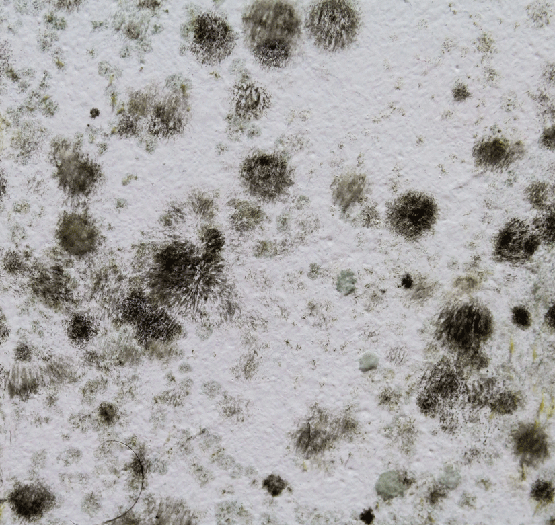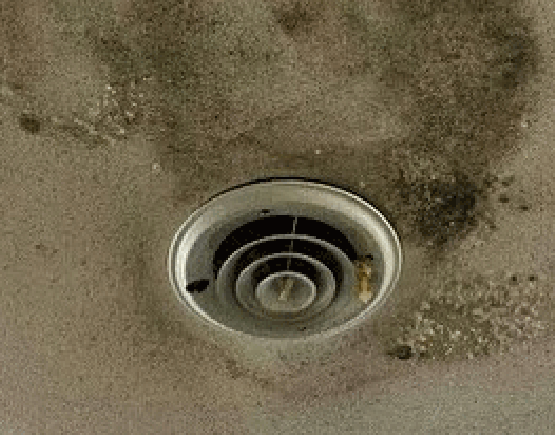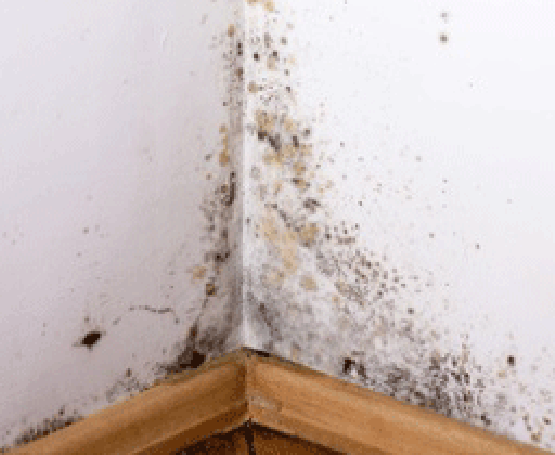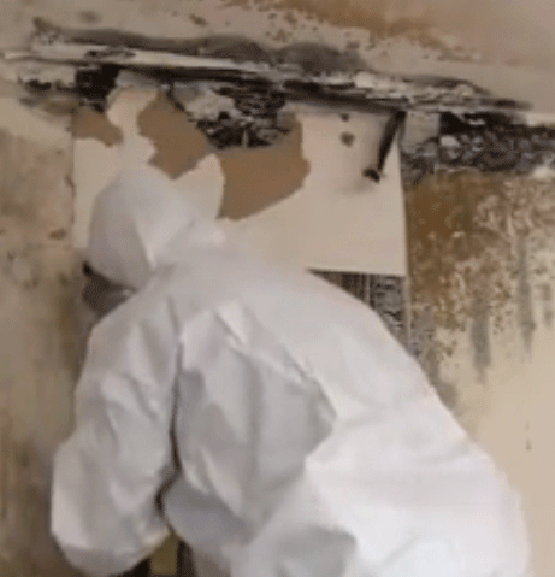What is involved with mold remediation?
Think you have mold in your home? A major mold infection can ruin your home and have a negative effect on your health so the key part is to resolve it quickly. First lets cover the most common types of mold so that you can identify the type of mold you’re dealing with.
What is mold?
Mold spores are microscopic in size and float on the air. They may enter your home through HVAC systems, doors, windows, your clothing or even your pet. In small numbers and dry conditions these spores are pretty harmless.
However if you have moisture issues in your home mold growth can start within as little as 48 hours. This is because mold spores thrives in high humidity conditions. They grow very rapidly when exposed to moisture.
Different types of mold
There are many different forms of mold. According to the CDC its estimated that there are tens of thousands of mold types. Here’s a list of the most common types of mold found in homes:
Black Mold (Stachybotrys)
How to identify
This mold is black as the name implies although it can also appear a bit slimy. Its often found on cardboard or wood.
Health effects
This is what often referred to as toxic or dangerous mold. This is because it releases compounds called mycotoxins that can cause various medical issues such as fatigue, headache, burning in the airways, persistent cough, difficulty breathing, nose bleeds, sinus issues, fever and in some cases even depression.


Pink Mold
Pink mold is actually not a mold. Its a bacteria but its often called mold.
How to identify
Its often found in bathrooms and showers. Especially in the grout of tiles and such where it feeds of the soaps you use in your shower. They are easy to identify as they appear pink and slimy.
Health effects
They are pretty harmless, but it can cause infections if it enters an open wound or mucus membrane like the nose, mouth or eyes.


Alternaria
How to identify
This type of mold is often found in bathrooms or in homes that have sustained water damage. It can be identified by the green or brown hairs. Its the most common type of mold found in these areas and spreads exceedingly fast.
Health effects
This type of mold can cause asthma like symptoms (coughing and watery eyes).


Ulocladium
How to identify
This type of mold is often found in bathrooms, basements or kitchens or where there has been water damage. It can be identified by their brown, grey or black colors. It has a texture of a cotton wool.
Health effects
This mold can cause severe reactions such as difficulty breathing, skin infections or even hay fever.


Aureobasidium
How to identify
This type of mold is often found on painted surfaces, wooden surfaces or behind wallpaper. It can be identified by a its pink or brown colors, sometimes with a black hue. As it ages it turns dark brown.
Health effects
This mold can cause skin, nail or eye infections.


Acremonium
How to identify
This type of mold can often be found in small areas with moisture like drain pans, window sealants, humidifiers and cooling coils. It typically starts pretty small, but then later on turns into a powdery substance that can be white, orange, pink or grey.
Health effects
This is a toxic type of mold. It could lead to health issues such as immune system disease or bone marrow disease.


Aspergillus
How to identify
This type of mold can often be found on walls. It has long flask-shaped spores which makes them easy to identify.
Health effects
This can lead to allergy like symptoms such as running eyes and coughing.


What is mold remediation
To simplify things we’ll call the process mold remediation, but it can also be called “mold removal”, “mold abatement” or “mold mitigation”.


Mold remediation is the process of killing the mold and then removing all the remaining mold since dead mold can cause issues as well. If mold is in drywalls they are typically replaced due to the low cost of replacement.
Should I hire a mold inspector first?
The general consensus on this is that its not needed. Its often easy to see that you have mold. The exceptions to this could be if you simply don’t know how to recognize it, you want to be on the safe side, or if its in a new home you’re wanting to buy and you want to use it to negotiate your purchase price.
What happens when a mold remediation company arrives
When a mold remediation company arrives in your home to remove the mold typically all the workers will put on mold-proof suits and face masks like N95 masks. This can look scary, but its common practice to protect them not just from the mold, but from the harsh chemicals.
Once they’ve suited up they will seal off the work area using plastic so that the mold spores do not spread further.
They will then proceed to assess the mold situation. Depending on the situation they will either remove the mold areas or kill it first using biocide. If they take the approach of killing it first then they will at this point leave for approximate 24 hours to let the biocide kill all the mold. When they come back they will then start to remove the areas with mold since even dead mold can cause issues. Sometimes they will also encapsulate the mold using a special type of paint that encapsulates the remaining mold spores.
Once all the mold has been removed they will then install and use expensive equipment such as High Efficiency Particulate Air (HEPA) air scrubbers, commercial dehumidifiers and HEPA vacuums to capture any remaining mold spores. Regular filters do not work.
Once this process is done the removed drywall and such will be replaced and the process is now completed.
How to do mold remediation yourself
Its highly recommended that you use a professional to remove mold. If you’ve jumped to this section I recommend you read “What happens when a mold remediation company arrives” to see how a professional will do it.
If you still want to try removing mold yourself and it’s a small area here’s a mold remediation how to guide:
Tools & Materials needed
You’ll need these items:
- Old clothes and shoes you can throw out after this (ideally).
- N-95 mask.
- Rubber gloves that goes up to your arm.
- Safety googles. Should have no opening in the sides.
- Drywall saw (If you’re removing mold in a drywall).
- Drywall & insulation (If you’re removing mold in a drywall).
- Vacuum.
- Knife.
- Large fan ideally a window fan.
- Paintbrush.
- Paint that contains mildewcide to prevent future growth.
- Large brush.
- Large plastic bags.
- Bleach.
- Heavy Duty Cleaner.
- Large tape (Painters Tape).
- Oil-based or shellac primer.
- Plastic sheeting.
- Old clothes.
- Garden sprayer or spray bottle.
Pre-check
Put on your old clothes and shoes that you can either wash again or throw out after this. Then wear your gloves, N95 mask and googles.
Turn off your furnace and HVAC system, cover ducts and doors to contain spores. Turn off power if you’re opening up your drywall in case you accidentally cut a wire.
Seal off the area/room from the rest of the house using your plastic sheeting and tape.
Start the large fan to blow air out the window or door. This should be running the entire time your working and afterwards.
Removal
Tip: Spray the mouldy spots with your garden sprayer. This helps control the airborne spores.
Start cutting out the mouldy spots in the dry wall with your saw if its on the dry wall. If its on your carpet then cut the carpets using your knife. No matter where the mold is a key part is to ensure you get it all. So be generous in your removal. You don’t want to come back and have to do this again since you missed some mold.
If you find rot that means there’s been water damage for quite some time. Either remove the cut and replace it or treat the areas with wood preservatives after you’ve cleaned the wood and allowed it to fully dry. Then double up the rooted parts with pressure-treated wood.
If mold is in your bathroom or other parts of your house that you cannot remove then scrub the surfaces with a mixture of bleach, water and detergent. Use your brush until the mold disappears. If its hard to remove you can also let it set and let the bleach do its work. Then come back again. Then let it sit and dry.
Put all items in double wrapped plastic bags.
Cleaning Up
Once you’ve removed all the mold affected areas vacuum the debris thoroughly. Ideally you should have the vacuum outside so you’ll need a long hose. Then throw out the filter and bag and wash all parts with a bleach and water solution.
Let it dry
You now let your fan (and dehumidifier if you have this) run for 3+ days. Then come back and check for mold. You can either see it or smell it. If you see more mold start the process again.
Restoring
Once you’re confident you’ve removed all mold install new drywall and seal the wood with the oil-based or shellac primer. Then repaint wall surfaces with the paint.
Install new drywall and insulation if you’ve removed some.
Too much work?
Yes, this is a lot of work. That is why we recommend a highly rated mold remediation specialist to do the work. Not only will they do a better job than you ever could, they also have far superior equipment and they have training. Lets cover how to find a good specialist.
How to find a good mold remediation specialist?
The easiest way is to simply do a google search and look for companies with lots of good reviews and ideally long experience. Then give them a call. Oftentimes they will come to your home to do an assessment. There you can look for a few key points:
- Is the person courteous and professional?
- Can the person explain in proper English how the process works? If they cannot or they try to overly complicate it that can be a red flag.
What cost should you expect?
The cost varies based on your location, severity and location of the mold. A good rough number would be between $10 to $25 per square foot for mold remediation. Often you won’t know the size so this number is only useful after they’ve done an inspection.
Without knowing the size and severity its hard to estimate the price. It can be in the range from $500 to $4000. Other things that impact costs:
- Size of the mold issue as we already explained
- Location of the mold. Its far more expensive removing mold in HVAC systems. If you have mold in your HVAC you can expect costs from $4,000 - $6,000.
- The cause of the mold. If its a flooded septic tank that will incur a far higher cost due to extra testing and cleaning. Sewage flooding can cost between $10,000 - $20,000 once you include the testing and cleaning.
- If the mold can easily be removed and replaced or cleaned. Fabrics can sometimes be cleaned, other times requiring replacement. Often times drywall needs replacing. Costs for cleaning carpets and other fabrics is typically $2,000+. For mold removal in drywall it can go as high as $10,000.
- If the mold is in your crawl space it can cost anywhere in the range of $500 - $4,000.
Approximate costs per location
| Location | Cost |
| Basement | $1,500 - $3,000 |
| Attic/Crawl Space | $500 - $4,000 |
| Bathroom | $500 - $1,500 |
| HVAC Ducts | $4,000 - $6,000 |
| Under your roof deck | $500+ |
Will my insurance cover me?
That depends on your insurance. Insurance often pays if the problem was caused due to an emergency covered by your policy such as a burst pipe. It often does not cover mold due to deferred maintenance or from floods unless you have that specific coverage.
The bottom line
Once you detect mold deal with it quickly. Not dealing with it quickly will make the problem worse and you could risk not being covered by your insurance. We recommend using a highly rated professional for this.
Comments
0 Comments
Commenting not available yet
